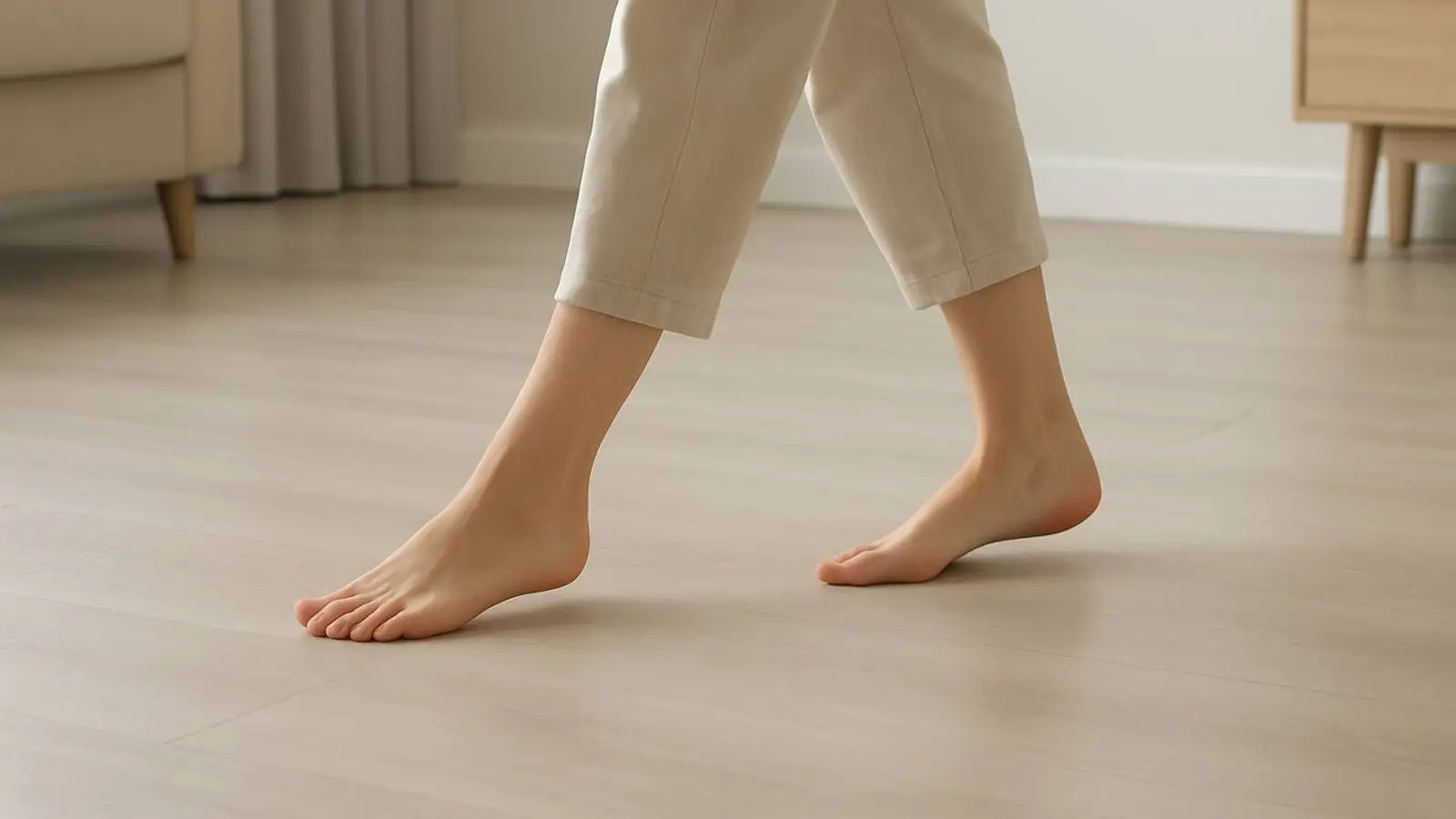https://boda.su/en/posts/id1461-barefoot-at-home-benefits-risks-for-foot-health-explained
Barefoot at home: benefits, risks for foot health explained
Should you go barefoot at home? Benefits, risks, and when shoes help
Barefoot at home: benefits, risks for foot health explained
Learn if going barefoot at home is good for foot health. We cover benefits, risks, when to wear shoes or socks, and cleaning tips to stay comfortable and safe.
2025-11-27T14:52:10+03:00
2025-11-27T14:52:10+03:00
2025-11-27T14:52:10+03:00
Kicking off your shoes the moment you step inside has become second nature for many. But is roaming around the house with bare feet actually helpful? Clinicians tend to say it can support foot health — though it won’t suit everyone.What “barefoot” really meansDoctors make an important distinction: truly bare feet are those with nothing on them — not even socks. Any layer of fabric alters the mechanics of your stride, which means the foot works differently. That nuance matters when we think about how direct contact with the floor affects the body.Why it can helpSpecialists note that going barefoot strengthens the small muscles of the feet — the ones that underpin stability, posture, and mobility. With constant shoe use, these muscles can weaken over time. There are other advantages too: the skin can breathe, which lowers the risk of fungal infections. Plus, the sensation of foot-to-surface contact tends to relax the body; a mild reflexology-like effect that can lift one’s mood. The appeal here is obvious: simple habits sometimes deliver the most tangible comfort.Possible risksThat said, barefoot living isn’t a universal solution. Floors can harbor allergens such as dust, pet hair, and traces of household chemicals. For people with sensitive skin, this may lead to irritation or inflammation.Moist surfaces pose another problem: the risk of developing fungal infections is higher in damp environments.And then there’s the injury factor. Hidden sharp objects or slick spots can cause cuts or falls. Extra caution is warranted for older adults and for those with circulation issues, including people with diabetes.When shoes make more senseThere are situations where support is essential. If you’re standing for long periods — say, while cooking — the load on the foot isn’t evenly distributed. In those cases, cushioned footwear or insoles help reduce pressure on joints and muscles. It’s a pragmatic compromise that keeps comfort in play.If going fully barefoot feels uncomfortable, plain socks can be a reasonable middle ground. They protect the skin from minor scrapes without restricting the foot’s natural movement.Should you change your routineDoctors agree: it’s fine to go barefoot at home if it feels pleasant and doesn’t cause discomfort. The key is to keep floors clean and factor in your individual health needs. For many households, that sounds like a sensible, low-effort balance.
barefoot at home, foot health, benefits of going barefoot, risks of going barefoot, socks vs barefoot, shoes at home, foot muscles, reflexology effect, fungal infections, clean floors, home safety
2025
articles
Should you go barefoot at home? Benefits, risks, and when shoes help
Learn if going barefoot at home is good for foot health. We cover benefits, risks, when to wear shoes or socks, and cleaning tips to stay comfortable and safe.
Изображение сгенерировано нейросетью Dall-e
Kicking off your shoes the moment you step inside has become second nature for many. But is roaming around the house with bare feet actually helpful? Clinicians tend to say it can support foot health — though it won’t suit everyone.
What “barefoot” really means
Doctors make an important distinction: truly bare feet are those with nothing on them — not even socks. Any layer of fabric alters the mechanics of your stride, which means the foot works differently. That nuance matters when we think about how direct contact with the floor affects the body.
Why it can help
Specialists note that going barefoot strengthens the small muscles of the feet — the ones that underpin stability, posture, and mobility. With constant shoe use, these muscles can weaken over time. There are other advantages too: the skin can breathe, which lowers the risk of fungal infections. Plus, the sensation of foot-to-surface contact tends to relax the body; a mild reflexology-like effect that can lift one’s mood. The appeal here is obvious: simple habits sometimes deliver the most tangible comfort.
Possible risks
That said, barefoot living isn’t a universal solution. Floors can harbor allergens such as dust, pet hair, and traces of household chemicals. For people with sensitive skin, this may lead to irritation or inflammation.
Moist surfaces pose another problem: the risk of developing fungal infections is higher in damp environments.
And then there’s the injury factor. Hidden sharp objects or slick spots can cause cuts or falls. Extra caution is warranted for older adults and for those with circulation issues, including people with diabetes.
When shoes make more sense
There are situations where support is essential. If you’re standing for long periods — say, while cooking — the load on the foot isn’t evenly distributed. In those cases, cushioned footwear or insoles help reduce pressure on joints and muscles. It’s a pragmatic compromise that keeps comfort in play.
If going fully barefoot feels uncomfortable, plain socks can be a reasonable middle ground. They protect the skin from minor scrapes without restricting the foot’s natural movement.
Should you change your routine
Doctors agree: it’s fine to go barefoot at home if it feels pleasant and doesn’t cause discomfort. The key is to keep floors clean and factor in your individual health needs. For many households, that sounds like a sensible, low-effort balance.

